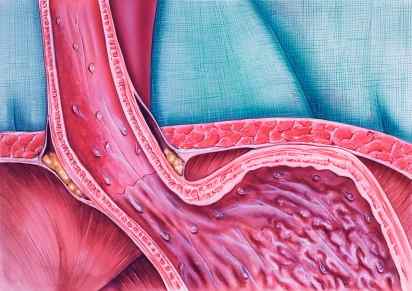Barrett’s esophagus is a change in your cells lining your esophagus (food tube) it’s more common in people with acid reflux (gerd), but can develop without having gerd management ranges from monitoring your esophageal lining with endoscopies to treatments to remove damaged tissue. Gastroesophageal reflux disease and barrett's esophagus. Gastroesophageal reflux disease (gerd) is a chronic condition in which retrograde flow of stomach contents into the esophagus causes irritation to the epithelial lining reflux episodes are primarily caused by inappropriate, transient relaxation of the lower esophageal sphincter ()risk factors include smoking, alcohol consumption, stress, obesity, and anatomical abnormalities of the.
gastroesophageal reflux disease and barrett's esophagus
Gastroesophageal reflux disease (gerd) is the result of a disordered valve mechanism between the esophagus (swallowing tube) and the stomach the valve, or lower esophageal sphincter (les), opens during swallowing to allow food to enter the stomach and then closes to prevent food and stomach secretions from moving backward into the esophagus. The barrett's esophagus center at baylor medicine in houston, texas, offers the latest screening and therapeutic techniques for managing gerd and barrett's esophagus. led by drs. mohamed othman, sharmila anandasabapathy nabil mansour, reena v. chokshi, and hashem el-serag, our expert team of specialists use advanced endoscopic technology. Gastroesophageal reflux disease is a condition in which stomach contents, including acid, back up (reflux) from the stomach into the esophagus and even the throat.; the main symptom of gerd is frequent and persistent heartburn, which is pain or a burning sensation in the stomach or upper abdomen.other symptoms of gerd include. regurgitation of bitter acid up into the throat,.






